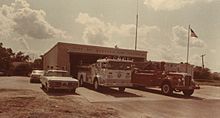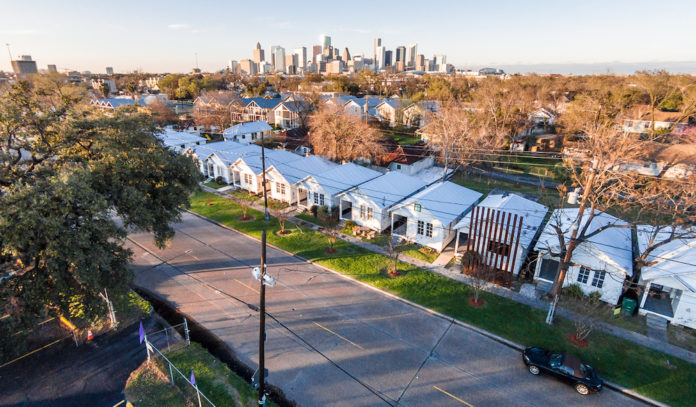Citi Trends
aka milobased
Even if a town, particularly your hometown, isn't a Freedmen town/a majority black or a heavily ADOS influenced city(at the moment), you should take the time out to research it's beginnings and settlers.
Many of these cities, especially smaller southern cities, were founded with the aid of "free" blacks and the enslaved. There were small battles and conflicts where our ancestors were some of the first people to fight and die for this country and its settlements.
Help preserve the names of those who made this all possible while being under the worst conditions. Learn about yours or your people's small towns. This is why the declaration of "descendants of SLAVES" is important and nothing to be ashamed of.
Alot of these towns are dying out and being forgotten along with the named of the men and women who helped found them.
One by one, Missouri’s black towns disappear
https://www.washingtonpost.com/loca...ory.html?noredirect=on&utm_term=.7fefa9f3dab9
A list of Freedmen's town List of Freedmen's towns - Wikipedia
But the history is more vast and earlier than that. Chances are your hometown was helped into existence prosperity by enslaved or former enslaved.
Looking up history for my own birthplace(Columbus, MS) and the area surrounding it, I discovered alot I didn't know. Though I was already obviously aware of it being a majority black city with obvious black influence and culture, what I did not know was that the first major construction project started in my city was by a former slave named Horace King.
Black History and the settlement of Columbus
Many of these cities, especially smaller southern cities, were founded with the aid of "free" blacks and the enslaved. There were small battles and conflicts where our ancestors were some of the first people to fight and die for this country and its settlements.
Help preserve the names of those who made this all possible while being under the worst conditions. Learn about yours or your people's small towns. This is why the declaration of "descendants of SLAVES" is important and nothing to be ashamed of.
Alot of these towns are dying out and being forgotten along with the named of the men and women who helped found them.
One by one, Missouri’s black towns disappear
“People don’t really think about African-Americans in the country,” said Todd Lawrence, a descendant of Pennytown residents. “They don’t think about African-Americans as farmers. They don’t think about African-Americans raising animals. And that’s certainly what [those communities] were. Those were places where black people lived in rural settings and thrived. We’re losing that sense, certainly in the Midwest, that there is this culture of rural blackness.”
Freed slaves founded Pennytown in 1871, and sharecroppers in the 1920s settled Pinhook. Kinloch is the oldest incorporated African-American community in Missouri.
“These are places where black people came to escape Jim Crow,” Lawrence said. “Those towns became a kind of paradise for black people, because it allowed them to create a space free from external oppression, to a certain extent.
“We can’t let the knowledge of these places pass into nothing.”
https://www.washingtonpost.com/loca...ory.html?noredirect=on&utm_term=.7fefa9f3dab9
The old people used to say that Sugarland, Md., one of the hundreds of all-black towns and communities established by freed slaves after the Civil War, got its name because its founders believed that “the women here were as sweet as sugar.”
Gwendora Reese, 73, and her cousins Nettie Johnson La’Master, 74, and Suzanne Johnson, 65 — who are direct descendants of the town’s founders — are telling the story of Sugarland. Reese and La’Master grew up here, in wood-frame houses built by their fathers, direct descendants of freed slaves who founded this community about an hour’s drive north of Washington.
They remember their mothers canning peaches and their siblings skipping along dirt roads, playing tag among fruit orchards. They remember sitting on the hard benches in the church built by former slaves. And visiting elders who spoke with pride about a community founded and run by blacks. Sugarland had its own general store and postmaster.
Sugarland was founded on Oct. 6, 1871, when three freedmen — William Taylor, Patrick Hebron Jr. and John H. Diggs — “purchased land for a church from George W. Dawson, a white former slave owner, for the sum of $25,” Reese says. The founders made a small down payment and continued to pay until the debt was settled. The deed dictated that the land be used for a church, a school and “as a burial site for people of African descent.”
Today, Sugarland is mostly horse country with million-dollar homes that sit on rolling hills. Many of the houses that former slaves built have been torn down. The forest has overtaken lots where freedmen once lived. The winding dirt roads that separated this black community from a white world are now paved.
A list of Freedmen's town List of Freedmen's towns - Wikipedia
But the history is more vast and earlier than that. Chances are your hometown was helped into existence prosperity by enslaved or former enslaved.
Looking up history for my own birthplace(Columbus, MS) and the area surrounding it, I discovered alot I didn't know. Though I was already obviously aware of it being a majority black city with obvious black influence and culture, what I did not know was that the first major construction project started in my city was by a former slave named Horace King.
Black History and the settlement of Columbus
"The influence of blacks in the Tombigbee Valley began with the earliest European exploration. When the Hernando de Soto expedition passed through this area in 1540-1541, seven or eight free Blacks served with him. The French military forces operating along the Tombigbee out of Mobile in 1736 included a company of black soldiers. They were under the command of Simon, a free black French officer. During the American Revolution, free Blacks served in American and Spanish forces fighting the British in the Mobile area. The first man wounded in the 1780 Spanish-American assault on the English Fort Charlotte in Mobile was a free black man. And Lorenzo Montero, another free black, commanded a cannon in a Spanish battery during the assault against the British. Unfortunately the names of many of the blacks who played an important role in our earliest history have been lost."
In the history of Columbus, free blacks had an early impact. In 1822, there was a lumber dealer in Columbus by the name of James Scott who was providing materials for the construction of houses in the new town. County records indicate that there were no whites in his household, thereby implying that he was black. By 1843, Isaac and Thomas Williams were living in Columbus with their families. Both were black. Isaac was a laborer and probably a contractor; Thomas was a blacksmith.
The first major construction project in Columbus was the building of a bridge across the Tombigbee River. The bridge was built by Horace King, an black engineer who in the mid 1800s was considered the best bridge builder in the south. He earned that reputation while a slave, though he later purchased his freedom and entered into partnership with his former owner. King built the Columbus Tombigbee bridge in 1842. It was a wooden covered bridge that came off of the river bluff at 4th Avenue South and was 420 feet long and 65 feet high. He also built bridges over the Luxapalila and Yellow Creek, both of which survived into the 20th Century. A 1936 Memphis Commercial Appeal article said the Luxapalila bridge was 94 years old and was the oldest bridge in Mississippi.





